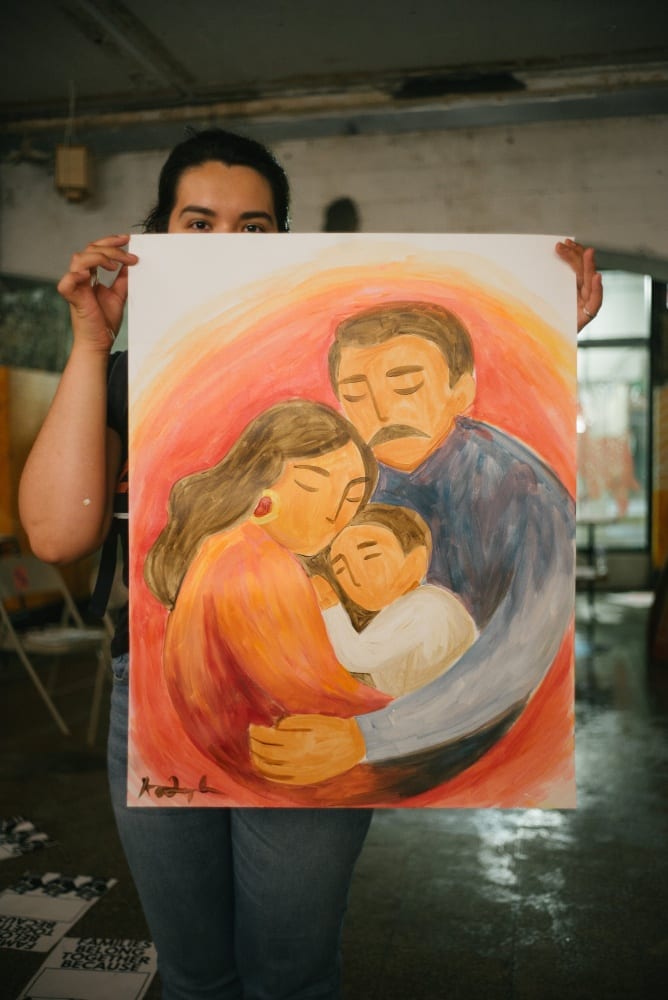In June 2018, Art Journal Open circulated an open call for reflections on the state of public funding for the arts and humanities, which were subsequently published in thematic groupings, organized by convener Sarah Kanouse. A number of these short responses were selected to be developed into expanded essays, which have been published over the last months. Patricia Nguyen’s “Speculative Futures” is the fourth in this series.
As I started to write this piece in March 2019, artnet news and Inside Higher Ed reported the Trump administration’s plan to drastically cut funding once again from the National Endowments for the Arts (NEA) and the National Endowment for the Humanities (NEH). The proposed budget is the most significant in national history ($4.75 trillion), with the biggest expense allocated for the Department of Defense at $576 billion. Currently, the proposed budget for the NEA is $29 million and the NEH at $38 million. This stark funding disparity speaks to the continued history of financial investment in US militarization impacting borders, immigration, and war nationally and internationally.
Chicago’s city council recently voted to approve a $95 million police academy in a predominantly black community in the southwest neighborhood of West Garfield Park, and Lincoln Yards, a luxury riverfront development project, in the predominantly white areas of Lincoln Park and Bucktown in the northside. Young trans, queer, black and brown youth part of the #NoCopAcademy went to city hall to protest the vote and have been organizing against this direct investment in the criminalization of, and divestment of resources from, communities of color in the city. They were held back for hours by police from entering the city council meeting. These federal and city budget decisions fundamentally demonstrate the current presidential, mayoral, and aldermanic administrations’ priorities and values. These budget decisions are inherently racist and disproportionately benefit upper middle class and wealthy white Americans at the expense of poor and working-class communities of color.
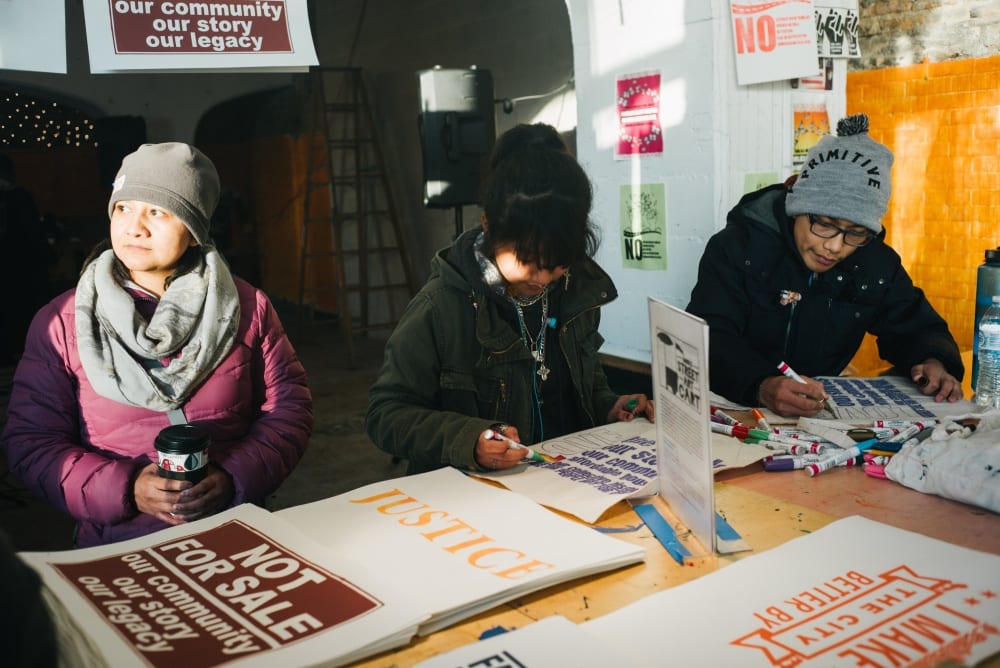
I open this essay discussing budget decisions at many levels—from federal to city—because it is in this ecology of precarious funding that Axis Lab has charted a course of experimentation in finding support within and outside of these systems. Axis Lab is a community arts organization I cofounded and of which I am the current executive director. Our organization advocates for inclusive and equitable resources for immigrants and refugees in a historic Southeast Asian neighborhood in Chicago. As a child of Vietnamese refugees, growing up in a low-income/working-class neighborhood in Chicago (the very community I currently work in), I have directly felt the impacts of both federal and city funding policies impacting nonprofit social service agencies, public schools, employment opportunities, policing, and thus the hyper surveillance, criminalization, and underfunding of communities of color. These budgetary issues are not isolated but deeply related. Public funding for the arts and humanities is fundamental to cultivating a society of critical thinkers and cultural producers where a multiplicity of voices can address political, economic, and social issues, as well as alternative imaginaries. As a result, public funding for creative and critical theory and practice is dangerous to a government that seeks to subdue the public through authoritarian rule.1 Nevertheless, this essay explores Axis Lab as a case study: how we experimented with methods and practices of evading/transgressing those rigid structures while bumping up directly against them.
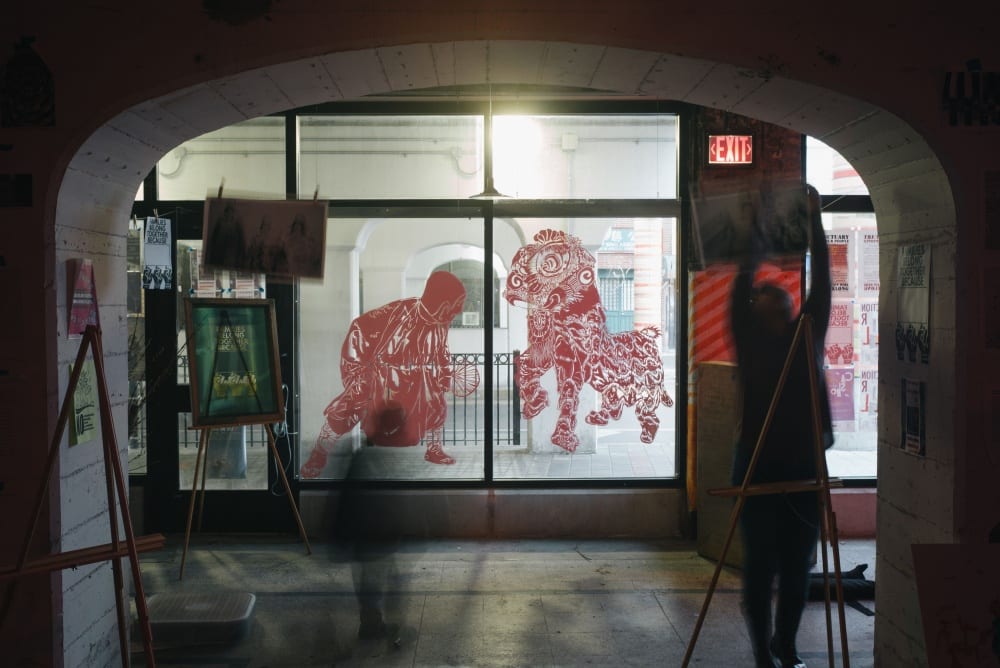
Axis Lab: A Place of Experimentation and Possibility
Axis Lab emerged in 2015—when several artist-organizer-of-color collectives were simultaneously coalescing in Chicago—with the intention of working at the interstices of traditional nonprofit community organizations, academia, and art galleries/performance spaces, imagining what is possible between and beyond these structures’ rigid limitations. Our founding team was a collective of five people who envisioned a thriving community on Argyle Street, building off the legacies of our immigrant and refugee families to imagine and manifest a more inclusive and equitable neighborhood. We were a team of visual artists, theatre practitioners, urban planners, architects, and graphic designers, first- and second-generation immigrants and refugees who brought together twenty years of working experience in the arts, theatre, schools, prisons, architecture, city government, and social services agencies. As cultural producers, we craved a space to create the world we wanted to live in, one where we could actively work toward social change.
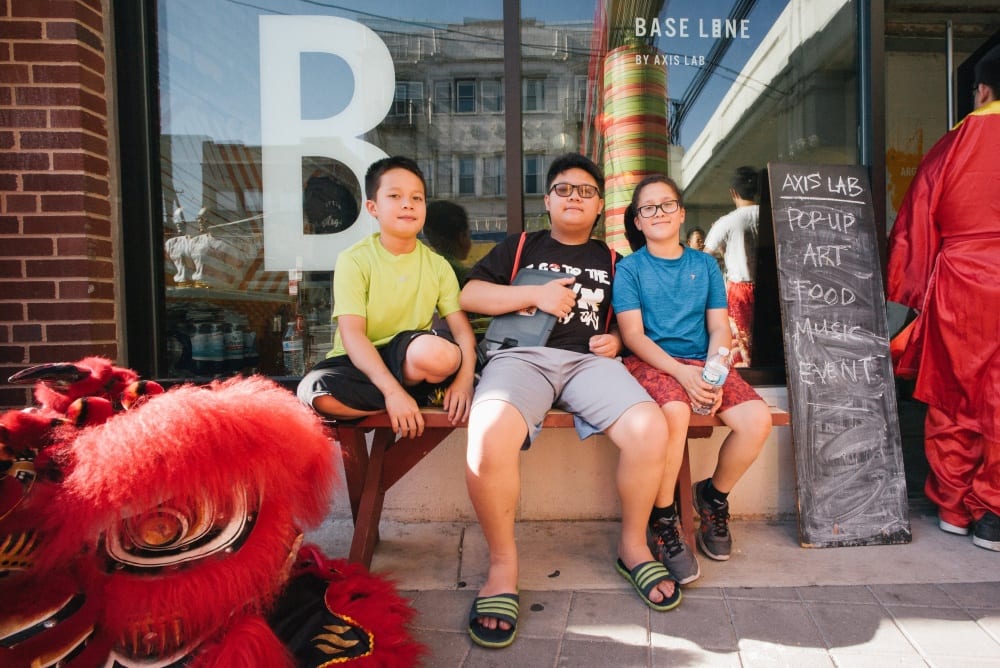
In 2015, we gathered in each other’s homes to chart the course of Axis Lab. We spent months brainstorming and meeting before we launched our programming in 2016. In our meetings, we mapped out the issues we care about alongside our skillsets and practices we wanted to cultivate. We grounded these passions in the current political, social, and economic problems facing the Argyle neighborhood, which included inter/intraracial tensions, rapid gentrification, increased policing, and lack of affordable housing and mental health resources. Argyle Street in the Uptown neighborhood of Chicago is historically the city’s port of entry for immigrants and refugees. Migration to the area was shaped by developments in the city’s transportation infrastructure and international war. In the late 1970s, after the Vietnam/American War, Southeast Asian refugees started resettling in the area and began to build a robust business district. Our organization was founded right before the “Shared Street” project finished on Argyle Street, a $4.8 million venture that closed down the street for two years and drastically impacted several of the area’s immigrant-owned businesses. Axis Lab members began returning to this neighborhood that we grew up in, right at the cusp of rapid development, vying to stake a claim to the place our families built as a home for themselves after war. Our work builds upon the activism of my father, Tam Van Nguyen, who has been a community organizer working with local businesses and government officials on civic engagement and ethical development for forty years. Axis Lab’s work is made possible because of decades of building trust and relationships locally.
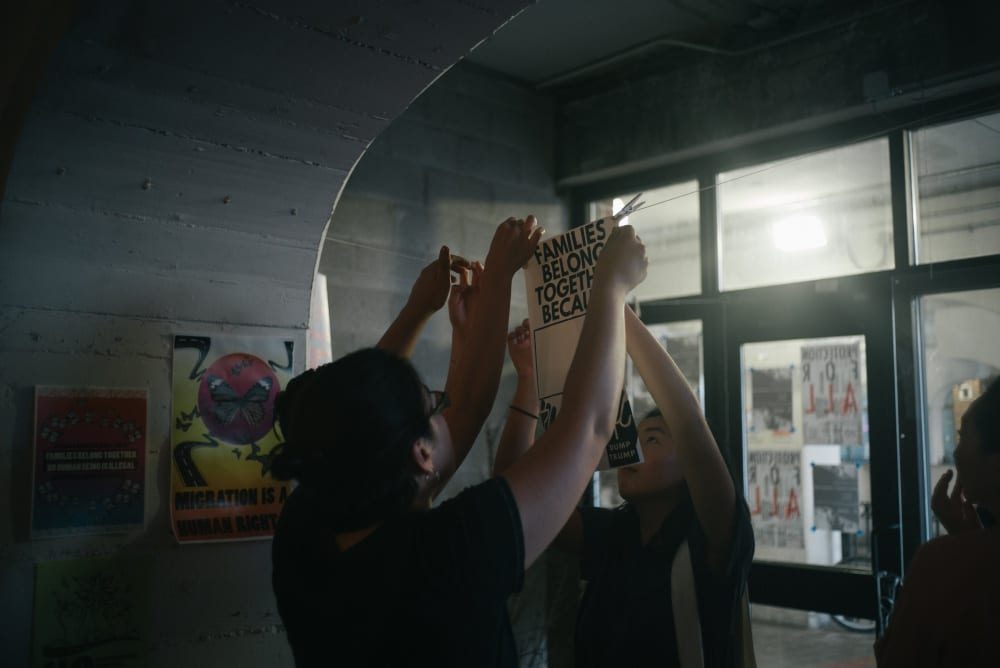
To launch Axis Lab, we met with elders in the community, fellow organizers, and local government officials to chart a history of the area, political tensions, and policy/funding priorities. We worked to create a structure where our passions and skills allowed us to develop projects to address issues facing Argyle, including policing, gentrification/forced displacement, and development of immigrant/refugee-owned businesses. We dreamed about programs and initiatives before we thought about whether funding/resources were available. We were tired of being bounded by grant timelines, deadlines, and rubrics. We just wanted the freedom to experiment, so we pooled our resources and funded our first arts education project through a crowdfunding website. We are entirely volunteer-based; this was not sustainable without proper funding, mainly because all of us had full-time jobs or were in school. We took nontraditional routes to secure funding; we opted for experimentation, knowing the constraints, but letting our passions and love for our community propel us.
A Historic Moment for Artists of Color and Organizers in Chicago
Axis Lab had the opportunity to collaborate with two amazing collectives: For the People’s Artist Collective and Chicago ACT Collective. This organizing work is not new; it draws from the legacies of the Black Panthers, Project NIA, 96 Acres, Sage Community Health Collective, and so many other art-based and healing community organizations, collectives, and initiatives in the city. (This list and its historiography are nowhere near comprehensive.) However, I want to mark a particular moment in Chicago’s history when artists and organizers of color formed collectives and actively worked together. This moment must be contextualized. In Chicago, Mayor Rahm Emanuel closed 49 public schools, dozens of mental health hospitals/clinics, and orchestrated the police cover-up of Laquan McDonald’s murder. Nationally, Trump’s “Muslim ban,” ICE raids, and border wall, as well as the United States’ continued mass shootings, particularly in Charlottesville, Virginia, and the LGBTQ nightclub Pulse in Orlando, Florida, were happening simultaneously.
In these moments of violence, we looked to each other. We turned to one another for hope, support, to fall apart, to cry, to heal, to resist, and to imagine elsewhere. We organized with one another against these federal and local policies that condone and profit from state-sanctioned violence. We created spaces full of dance, music, song, and communion to enliven our bodies with comfort and moments of freedom in the face of terror and bodies literally being ripped apart from each other. The work continues, and it speaks to the power of art and collaboration, of friendship and a commitment to social justice. Much of this organizing work is made possible through trust and friendships, especially when events were coordinated with quick turnaround times to respond to the (constant) state of emergency communities of color face.
I remember receiving a text from a fellow organizer, Silvia Gonzalez (a member of the Chicago ACT Collective), a dear friend and fantastic artist who started the rapid response artist conversation series along with another influential activist and artist in the city, Monica Trinidad (cofounder of For the People’s Artist Collective). They hosted the first “Rapid Response: Art and Resistance Work” panel at La Catrina, a local Mexican American–owned coffee shop in Pilsen, Chicago. The panel featured all queer/femme-of-color artists and organizers across the city. This event was made possible through strong relationships, the labor of women of color, and a local venue that provided a free space. This ecosystem of support offered an opportunity for hundreds of people to gather after the Charlottesville attack and to recenter the voices of queers and femmes of color organizing on issues of immigration, gentrification, police brutality, and more in the Chicago context.
We continued to build upon this event to host two others, including “Rapid Response: Healing through Art and Resistance” in September 2017 (organized by Silvia Gonzalez, Monica Trinidad, and myself) and “Rapid Response: Border Violence & Community Care” in June 2018 (organized by Timmy Chau, Organized Communities Against Deportation, and Axis Lab). All these events were free and open to the public, volunteer-based, powered by queer/femme-of-color organizing labor, and made possible with donated space. These events included teach-in panels that centered the voices of artists and organizers of color across the city, artmaking stations, and community acupuncture/massage therapy.
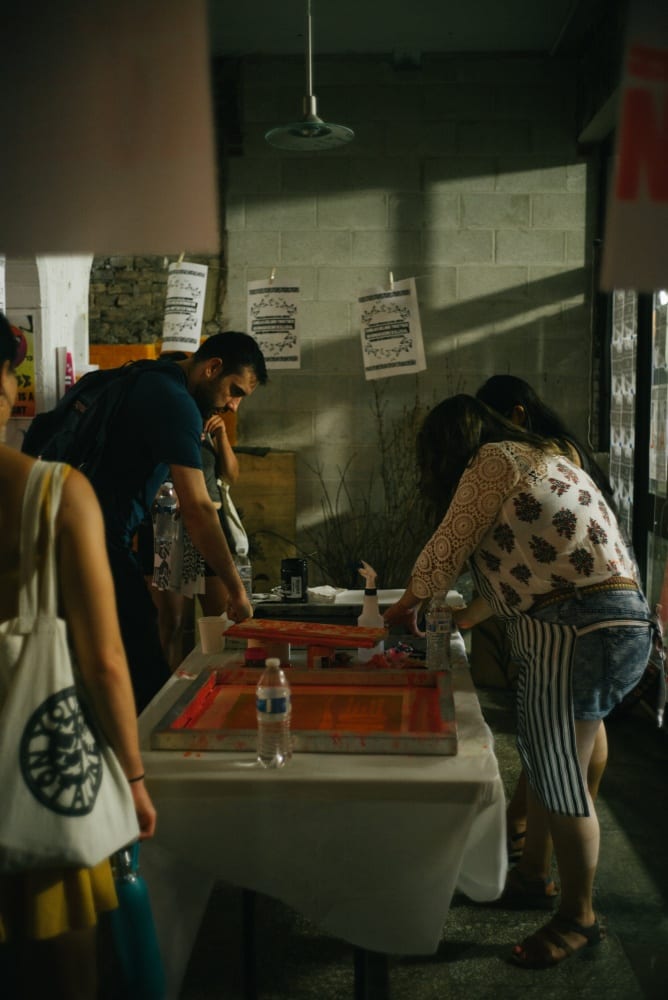
Our programs and collaborations reveal the power of our community and our ability to pool limited resources to support one another and create spaces where dialogue, artmaking, and healing are possible. But this work is not sustainable without proper funding; the work begins to wear away at our limited personal resources, mental health, and wellbeing. We worked for two and a half years through different phases of experimentation, pooling together community resources and offering our time and labor, at times overextending ourselves after ten-hour workdays. Over time, the demands of our full-time jobs on top of working in a community dealing with the traumatic aftermath of war (impacting both the first and second generation’s mental health) seeped into our organization. Though we tried to bring in a healing justice framework into our work and imagine more sustainable modes of building together without proper funding for projects, a livable income to dedicate our time more fully to the organization, or proper health insurance, it was difficult to develop long-term projects sustained by people who were burnt out. Now, we look to a new phase of our organization with the closing of our organization’s space. The impermanence of our space and how exhausted we felt (albeit inspired by the community we built) was a reminder for us to recalibrate our vision and strategies.
Base Line: The Next Stops
From December 2016 to December 2018, Axis Lab hosted a series of events with entitled Base Line, which took form as daylong festival featuring black-, immigrant-, and refugee-owned businesses, visual artists, and performance artists. Base Line derived its name from us operating underneath the train line, at the base of the elevated redline train tracks. The initial aim of the event was to build off the newly constructed “Shared Street” project, which was intended to make the streets friendly to pedestrians. However, during the two years of construction, several immigrant-owned businesses closed, and luxury developers emerged onto the scene. We created our event as a public intervention to redirect the course of development and ground it in the legacies of our family’s stories of forced migration, war, and resettlement to the area. Our event was a public and grassroots affair, offering an alternative vision of what inclusive and equitable neighborhood development might look like.

Axis Lab operated in a vacant storefront underneath the Argyle Street train station, which was made possible through decades of relationship building between my father and the local alderman’s office. It was through meetings between Alderman Harry Osterman and the Chicago Transit Authority, with support from the local Uptown Chamber of Commerce, that we were able to have a space to operate and create free arts programming within from 2016 to 2018. We received support from the alderman’s office and Uptown Chamber of Commerce to make our work possible with permits and insurance. This work reveals how local government officials, chamber of commerce, and transit authorities can support local artists and collectives.
The title Base Line became a metaphor for the foundation of possibilities, drawing on what Fred Moten and Stefano Harney call the undercommons, to enact another world. In all of our programs, we hoped that we could create a series of events that centered the voices and economic power of historically marginalized communities of color. Chicago is one of the most segregated cities in the United States. We envisioned a space where we could create a platform through the arts to traverse city grids and combat the effects of redlining to imagine another world together, even for a day. We highlighted local businesses that were struggling through this “urban renewal” period by bringing people from across the city into the area. Our events brought thousands of people to Argyle Street. We invited artists from all over the city of Chicago; our audiences were of various generations, from babies to elders in their nineties. Our performances were varied, from hip-hop, spoken word, and performance art to traditional dragon dances and taiko drums, where we took up the street with hundreds of people claiming our right to thrive.
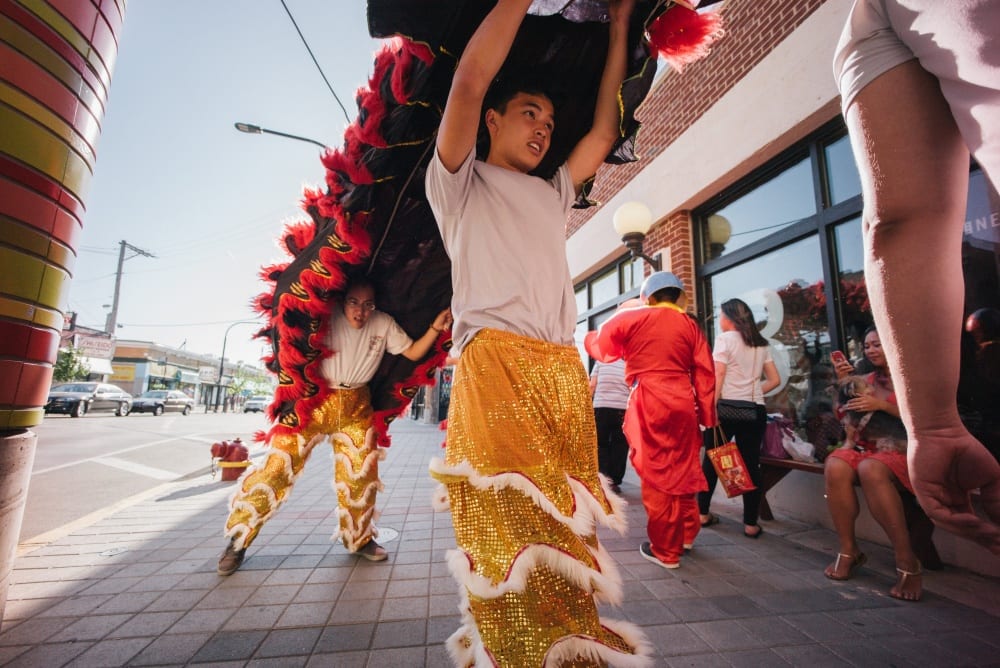
Some of the artists featured in our programming included Tonika Johnson, a prolific photographer from Englewood, Chicago, whose work Folded Map reveals the disproportionate divestment and investment in the south versus the north side of the city. Settlement by Balas and Wax, a series of drawings and fiberglass sculptures, features archival images of a neighborhood in southwest Chicago that was demolished to build the Eisenhower Expressway; the debris was taken up to extend the lakefront on the north side. We also featured William Estrada, an amazing artist and educator, whose Mobile Street Art Cart traverses the segregated city to offer interactive screenprinting and poster- and button-making workshops to address issues of mass incarceration, gentrification, and sanctuary. We also invited organizations and performers across the city who actively work with black, trans, and queer communities of color across the city, including Darius Parker from Kuumba Lynx, the National Asian Pacific American Women’s Forum, Cooperation 4 Liberation, and so many more. In the near future, Axis Lab will create a written archive with a series of essays and creative work centering the artists and organizations part of this closing event to write a history of Chicago, urban planning, and the continued struggle for social justice. We are currently working on funding for this project, as we believe in properly compensating artists and community organizers.
Through visual art, performance, and grassroots organizations, Base Line highlighted a history of racial and economic segregation, forced displacement, and the resiliency of communities in Chicago. Our budget was extremely limited—saved from honoraria we received during our lectures and workshops at local universities—but our relationships with local artists were strong. We wanted to make sure to pay our artists, even if it ended up coming out of our own pockets.
The contract terms surrounding our occupation of the Argyle Street train station space were always limited, always contingent on the impending reconstruction on the CTA. We were asked to leave the space at the end of December 2018 and evacuated in January 2019. Beneath these shifts and changes in our own organization is the broader context of lack of funding and support available for projects like these. It is also underscored by the same thrusts of neighborhood development to which we responded in our initial occupation of the Argyle Street space: an imminent $2.1 billion CTA “modernization” project will close four major train stops in the north side of Chicago, directly impacting poor, working-class, immigrant, refugee, and African American communities, as well as elders who live in government-subsidized housing, own small businesses, and seek social services in the area.
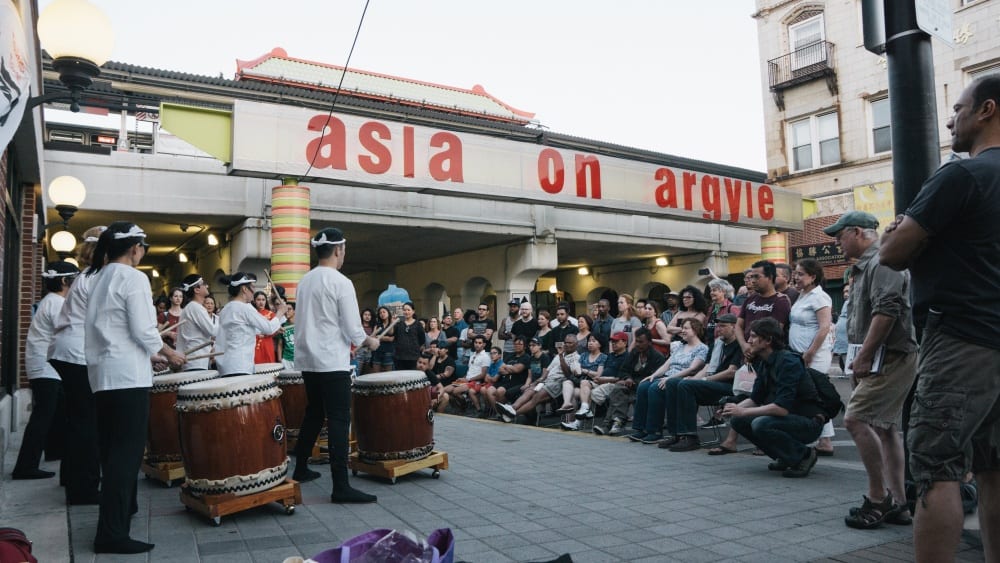
Even though our organization closed its physical space, we plan to operate digitally as we create an online archive, pop-up events, and workshops. During this hiatus period, we are reimagining public space to create platforms to address issues of political, social, and economic injustice and center the voices of historically disenfranchised and dispossessed communities. This current moment is an especially critical juncture in Chicago’s history: the city has elected a new mayor and the United States is facing the onslaught of violent immigration policies, border policing, mass incarceration, and misappropriation of federal funds. The arts are a critical tool for social justice. It is crucial to link the relationship between the need to garner funding for the arts and humanities to the issues of state violence and repression. Federal and local government continue to expect marginalized and disenfranchised communities of color to provide for themselves while their labor and lives are being exploited, neglected, and attacked by the state. It is vital to draw the direct connection between the lack of funding for the humanities and arts to funding priorities in policing, militarization, and prisons at the expense of under-resourced communities of color. As a result, in addition to the call for different metrics and structures for funding and evaluation (which the Third Wave Fund and Crossroads do very well), we need to extend an analysis of funding priorities as a more substantial move towards reimagining what it means to build a better society.
Additional Links
- 96 Acres
- Axis Lab
- Chicago ACT Collective
- Cooperation for Liberation
- For the People’s Artist Collective
- Kuumba Lynx
- Mobile Street Art Cart
- Organized Communities Against Deportation
- Project NIA
Patricia Nguyen is a visiting assistant professor in Asian American Studies at Northwestern University, where she earned her PhD in Performance Studies. Her research and performance work examines critical refugee studies, political economy, inherited trauma, torture, and nation building in the United States and Vietnam. She is the executive director of Axis Lab, a community arts organization based in Chicago that focuses on inclusive and equitable development for immigrants and refugees. Nguyen’s monumental anti-monument architectural design was recently selected as the winning entry for the Chicago Torture Justice Memorial Project.
- Not all work in the arts and humanities contributes to social justice; there are ways in which its institutionalization over-regulates and overdetermines the kind of work that is created, rewarded, and circulated. I find Kandice Chuh’s and Sylvia Wynter’s critique of the humanities and its fundamental notion of the human/man/liberal subject particularly pertinent to understanding which subjects and projects are legible for funding and in turn how the metrics of evaluation for funding are determined. See Kandice Chuh, The Difference Aesthetics Makes: On the Humanities “After Man” (Durham, NC: Duke University Press, 2019); and Sylvia Wynter, “No Humans Involved: An Open Letter to My Colleagues,” Forum N.H.I.: Knowledge for the 21st Century 1, no. 1 (Fall 1994): 42–73. ↩


